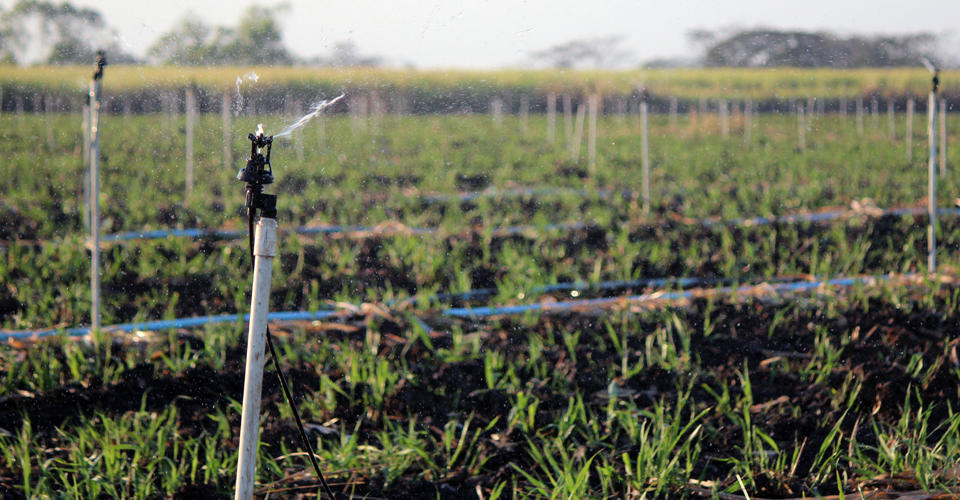The Trip of Sugarcane: From Harvest to Everyday Products
The trip of sugarcane is a diverse procedure that starts with meticulous farming and finishes in a variety of items that permeate our day-to-day lives. As we explore the numerous aspects of sugarcane's trip, its function in sustainability and the more comprehensive ramifications for our environment come right into sharper emphasis.
Growing of Sugarcane
The farming of sugarcane is an essential farming procedure that needs details environmental problems and management practices. Optimum growth takes place in tropical and subtropical regions where temperatures vary between 20 ° C and 32 ° C. Adequate rains or irrigation is essential, as sugarcane prospers in wet soil with well-drained problems (sugarcane product). Dirt high quality substantially influences yield; hence, farmers frequently carry out dirt tests to figure out nutrient demands
This method helps with effective gathering and makes the most of sunlight direct exposure. Plant turning and intercropping are advised techniques to improve dirt fertility and minimize pest infestations.
Timely application of these plant foods can substantially improve sugar returns. Generally, successful sugarcane farming hinges on a mix of environmental stewardship, strategic preparation, and ongoing administration practices.
Collecting Methods
Effective sugarcane growing finishes in the harvesting stage, which is critical for optimizing return and making sure top quality. The timing of the harvest is vital; sugarcane is generally collected when sucrose levels top, generally between 10 to 18 months after growing. This period differs based upon climate, soil kind, and sugarcane variety.
Gathering strategies can be extensively classified into handbook and mechanical approaches. Manual harvesting is labor-intensive, counting on skilled workers who use machetes to cut the stalks short. This approach enables selective harvesting, where only the ripest walking canes are picked, thus enhancing general sugar web content.
Alternatively, mechanical harvesting has actually gained popularity because of its performance and cost-effectiveness. Specialized harvesters geared up with cutting knives and conveyor systems can refine big locations promptly, significantly reducing labor expenses. Nonetheless, this strategy might lead to the inclusion of immature canes and a potential decline in sugar quality.

No matter of the technique utilized, guaranteeing that harvested canes are transported swiftly to refining centers is essential. Motivate taking care of lessens wasting and preserves the integrity of the sugarcane, establishing the stage for ideal handling.
Processing Approaches
Handling sugarcane involves numerous essential actions that transform the collected stalks into usable products, primarily sugar and molasses. The initial phase is washing the walking cane to get rid of dirt and particles, adhered to by the extraction of juice via crushing or milling. This procedure typically uses heavy rollers that damage the walking stick fibers to release the wonderful liquid had within.
When the juice is extracted, it undertakes clarification, where contaminations such as soil fragments and bagasse are eliminated. This is often attained by adding lime and heating up the juice, allowing sedimentation. The made clear juice is then concentrated via dissipation, where water material is reduced, leading to a thick syrup.

Inevitably, the processing of sugarcane not only generates sugar and molasses but likewise lays the foundation for different by-products, which will be checked out in succeeding conversations.
Products Derived From Sugarcane
Sugarcane is a versatile crop that produces a vast variety of items past simply sugar and molasses. Among the main spin-offs are ethanol and biofuels, which have actually gained prominence as renewable resource sources. Ethanol, created via the fermentation of sugarcane juice, functions as an alternative to fossil fuels and is commonly combined with gasoline to create cleaner-burning gas, reducing greenhouse gas emissions.
Furthermore, sugarcane is a considerable resource of bagasse, the coarse deposit continuing to be after juice removal. Bagasse is made use of in various applications, including the production of paper, naturally degradable product packaging, and as a biomass gas for power generation. Its usage not only minimizes waste however also enhances the sustainability of sugarcane processing.
Moreover, sugarcane-derived products include the food industry, where it functions as an all-natural flavor agent and sugar in different culinary applications. In the realm of cosmetics, sugarcane removes are integrated into skincare items because of their all-natural exfoliating properties.
Ecological Effect and Sustainability
The cultivation and handling of sugarcane have considerable ramifications for environmental sustainability. This plant needs considerable water resources, often bring about exhaustion of local water products and impacting surrounding ecological communities. Furthermore, the use of plant foods and chemicals in sugarcane farming can lead to dirt degradation and waterway contamination, positioning threats to biodiversity.

Sustainable sugarcane farming likewise advertises dirt health and wellness via plant rotation and minimized husbandry, enhancing carbon sequestration. The adoption of these techniques not only supports environmental honesty but also enhances the strength of farming communities against climate modification.
Verdict
In summary, the journey of sugarcane includes numerous phases from cultivation to processing, eventually leading to a vast selection of products. The importance of sugarcane extends past plain sweeteners, adding to eco-friendly energy with ethanol production, lasting product packaging via bagasse, and natural extracts for cosmetics. This multifaceted crop plays a vital duty in both nutritional enrichment and ecological sustainability, highlighting its relevance in modern agricultural and industrial practices.
Successful sugarcane cultivation finishes in the collecting stage, which is crucial for taking full advantage of yield and making certain quality. The timing of the harvest is essential; sugarcane is generally harvested when sucrose levels peak, usually in between 10 to 18 months after growing.Handling sugarcane includes a number of essential actions that transform the harvested stalks into useful items, mostly sugar and molasses.Sugarcane is a flexible crop that generates a vast variety of items past just sugar and molasses. Additionally, the usage of plant foods and pesticides in sugarcane farming can my sources result in original site soil destruction and river pollution, posing threats to biodiversity.